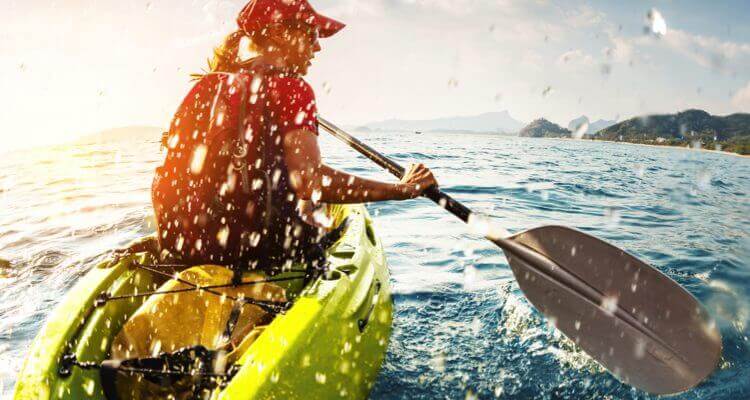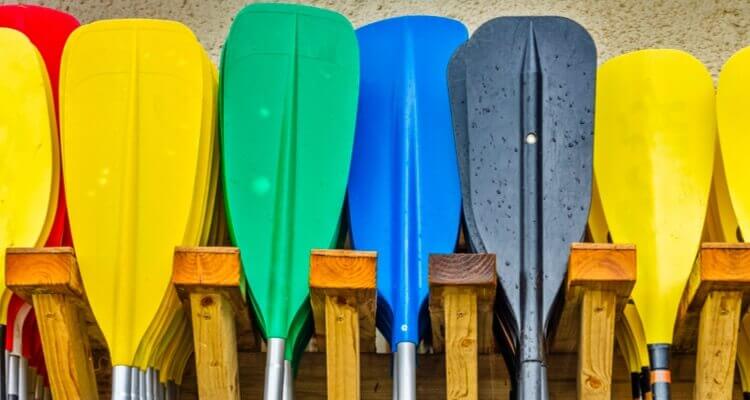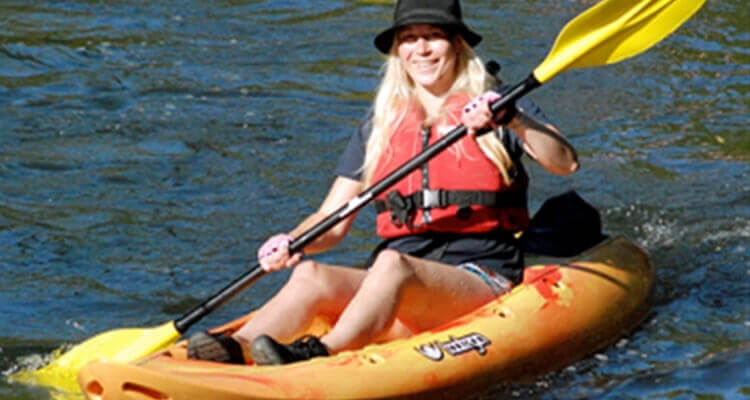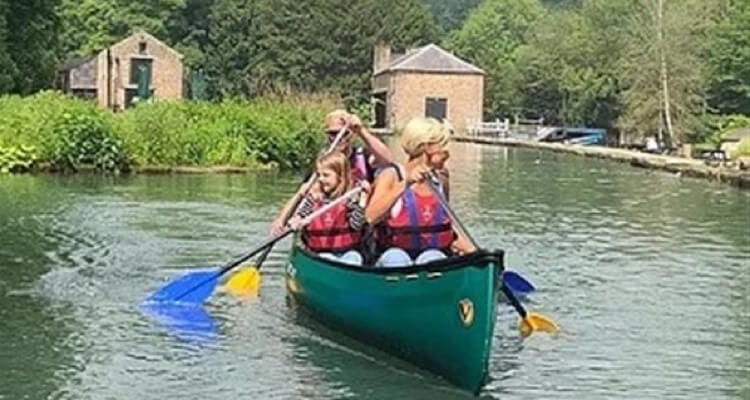
What’s the difference between canoeing and kayaking?
Is it a kayak or a canoe? Both use paddles and both get you up and down the water. But just what is the difference between canoeing and kayaking?
What is the difference between canoeing and kayaking?
The quick answer is that canoeing and kayaking have different paddles. And you don’t sit in a canoe the same way you do in a kayak.
Go on then, tell us more…
Well, in a canoe the paddler is kneeling or sitting on a bench and the paddle is single bladed. In a kayak the paddler is (usually) seated, with legs outstretched. A kayak paddle is double bladed.
So is that it when it comes to the differences between canoeing and kayaking?
No. That’s just the easy way to tell the difference between a canoe and a kayak. After that, it’s all about paddle technique, where you’re paddling and the characteristics of both types of boat.

An easy way to tell a canoe apart from a kayak? Single bladed paddles for canoeing, twin blades are for kayaking. That’s the difference between kayaking and canoeing.
OK, let’s have the rundown on paddling techniques
If you’re in a canoe, you’ll have a single blade paddle with a ’T’ shaped handle at the top. One hand holds this ’T’, whilst the other holds the shaft half way down. You make strokes in the water to propel yourself forward by plunging the blade into the water and pulling back. You then alternate putting paddle to water on the left and right hand side of the canoe.
Kayakers have a longer paddle, which has two blades. You hold the paddle with both hands shoulder-width apart in the middle of the shaft. You then dip the right followed by the left side into the water to make the paddle stroke. You’ll notice the blades on the paddle are mounted at 90 degrees to each other, so a slight twisting movement is needed as you alternate sides.
What about the differences in where you can use a canoe or a kayak?
There’s one important difference between the way a canoe and a kayak is designed – and that determines where you can use both vessels. A canoe is generally open top with higher sides, whilst a kayak is closed in. Indeed, kayakers sort of look ‘sealed in’ to the kayak when they have a spraydeck fitted around them, which makes the opening of the kayak watertight.
Although you do see canoes on white water, kayaks are generally the best choice of vessel for riding rapids and white water. In an open canoe the water would just overflow inside. It also means kayakers can do those famous ‘eskimo roll’ moves, where they ‘capsize’ and right themselves using their hips and the paddle.
Canoes, meanwhile, are great for calmer waters such as rivers, inland lakes and the like. And of course, kayaks can be paddled here too. But again, the key to be able to tell if it’s a canoe or kayak is the paddle. One blade for a canoe, two blades for a kayak.
Is kayaking an Olympic sport?
Yes – and so is canoeing. Sprint and Salom events for both canoe and kayak are the most well-known of the Olympic paddle sports events. There’s also marathon, freestyle, wildwater, canoe polo, ocean racing and paraolympic canoeing too. Some are solo or paired events, whilst the dragon boat racing is a whole team of paddlers gunning it along the water!
Where can beginners go to learn kayaking or canoeing?
There are paddle centres around the UK offering kayaking and/or canoeing lessons. Some are very much at a leisurely pace, with canoeing and kayak tours along gently flowing rivers, combining paddling with sightseeing.
Can you go canoeing or kayaking in London?
You can! There are actually some really calm hidden waters around the capital that are ideal for a little paddle out. We’re talking canoeing past Hampton Court Palace, along the Thames at Windsor, or kayaking around the famous Eel Pie island in Twickenham.
It’s worth noting that the British Canoe Association (BCU) oversees both canoeing and kayaking in the UK. It is also the body that accredits canoe and kayak centres. You should make sure that the canoe centre you’re interested in near you is a BCU accredited centre with BCU qualified instructors too.
All the canoeing and kayaking suppliers featured on our Intotheblue.co.uk canoe and kayak page are BCU accredited.
So now you know what the difference is between canoeing and kayaking, it’s time to get out on the water and get paddling, be it in a canoe or a kayak. Both are great sports out in the fresh air and can be as adrenaline-fuelled, or as chilled out as you like!


